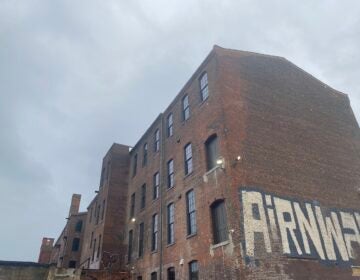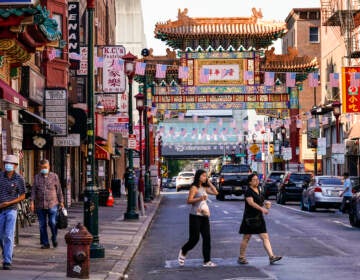Narberth: ‘Ahead of the curve’ on planning, zoning
Tiny Narberth, an island borough surrounded by the tony sea of Lower Merion Township, has long held its head high as a bastion of a bygone era. It has a real downtown, accessible on foot from any point in town, with sidewalks, an R5 train station (15 minutes from 30th Street), an interesting mix of residential architectural styles (from rambling Victorians to small bungalows to genuine Sears Roebuck mail-order homes, almost all of which date to the early 20th century) and a surprisingly high percentage of renters. Its well-used and recently refurbished library sits next door to a sprawling playground, home to serious summer basketball leagues that draw talent from around the region and a Fourth-of-July program with fireworks that would stack up against any town in Sarah Palin’s “real America.” On Dec. 13th, there was a Dickens Festival. Santa arrives by train and leaves by a big red fire engine.
It also traditionally has had a mix of incomes (if not necessarily ethnicities), small-town charm and a tight-knit shopping district (Mapes, Ricklin’s Hardware and the Greek’s pub are all institutions). Narberth is home to not one but two of modern American retail’s rarest of rare commodities: an independent family supermarket and a mom-and-pop drugstore. So “Shop Narberth First” and “Slow Down – Shop Narberth” have been familiar refrains around town, despite a persistent undercurrent of complaints about rising storefront rents (there are no longer any used bookstores, for example, but there seems to be a dry cleaning establishment for every dozen or so residents) and fewer commercial owners with a larger percentage of downtown’s offices and stores.
But the borough’s December newsletter took things a bit further than usual, imploring residents to think of the bottom line in an unprecedented economy. Narberth’s businesses are taxed on their gross sales receipts, contributing to the borough’s general fund and helping to reduce property taxes.
What caught our attention, though, was that the borough is tapping the zeitgeist of smart growth, greenish and local economies of scale, and the answer to anyone who ever took part in, say, a Collateralized Debt Obligation deal. That is, Wall Street may have abandoned us, but we’re all in this together.
“During these difficult economic times let us as a community utilize the hunter’s term ‘go to ground’ and hide all of our purchases here in Narberth,” the newsletter says. “This, Virginia, is the Main Street that everyone is talking about.”
In this sense, “Main Street” is Haverford Avenue, though Narberth has a larger commercial district along its northern edge, the busy thoroughfare that’s Montgomery Avenue. But “Main Street” in Narberth also means a sense of place and familiar faces, a planned community since 1895.
“Narberth has been ahead of the curve on downtown revitalization, parking, land planning and zoning for 100 years,” the borough newsletter boasts. “During these most trying economic times let us be ahead of whatever direction the economy takes us.”
If you’re in town, ask Angelo at the American Family Market to make you a nice Italian hoagie with hots on the side. If you need a trim, stop by DiBonaventura Barber Shop at Iona and Woodbine (look for the old-fashioned barber pole). Al D. will fix you up.
ON THE WEB: www.NarberthBorough.com
Posted by Thomas J. Walsh
WHYY is your source for fact-based, in-depth journalism and information. As a nonprofit organization, we rely on financial support from readers like you. Please give today.






